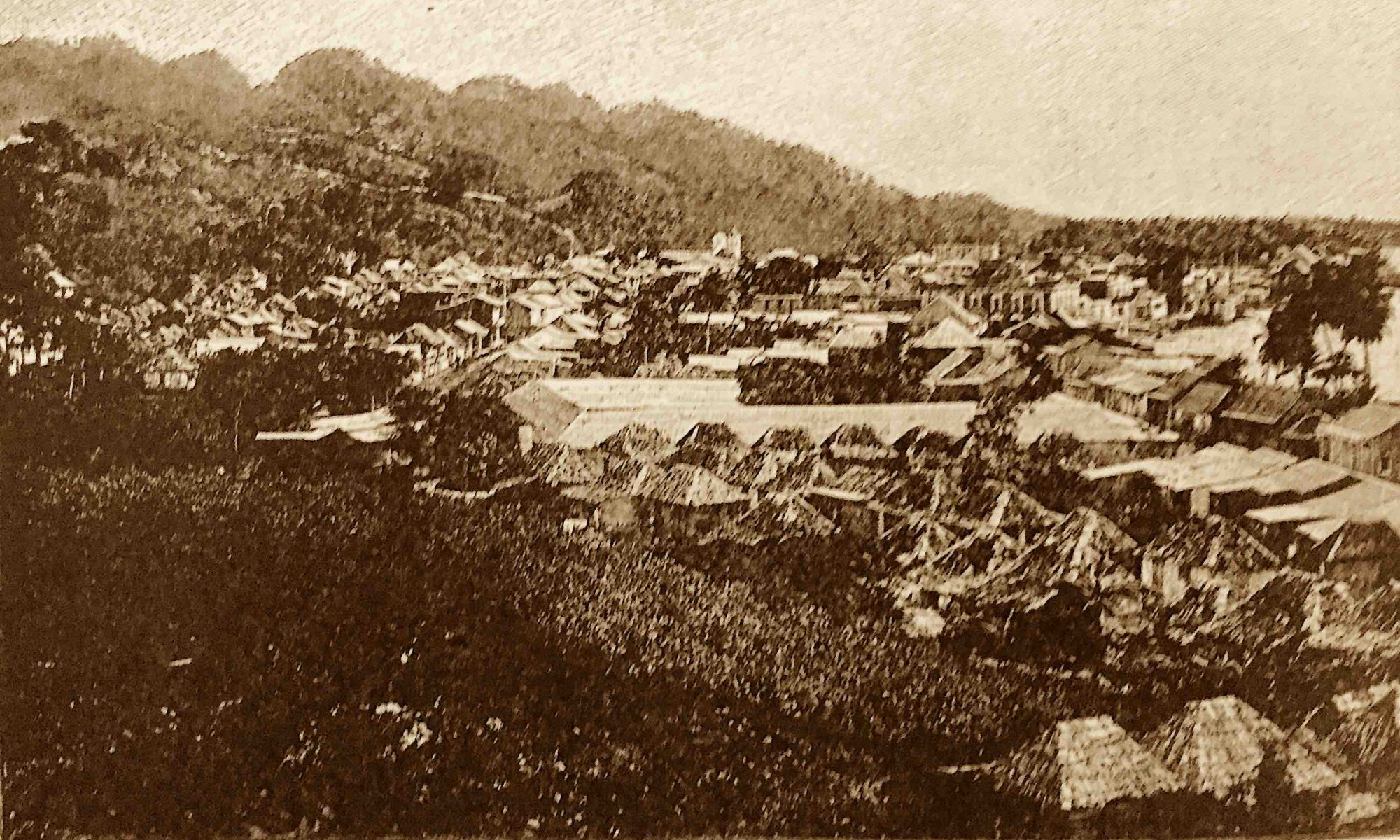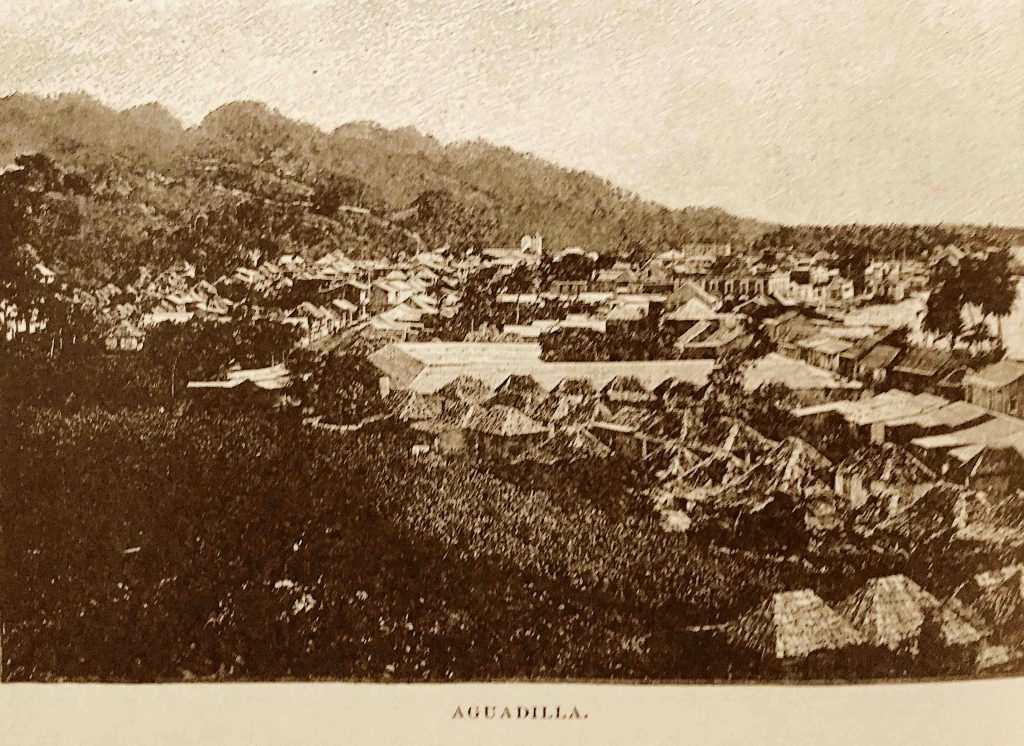
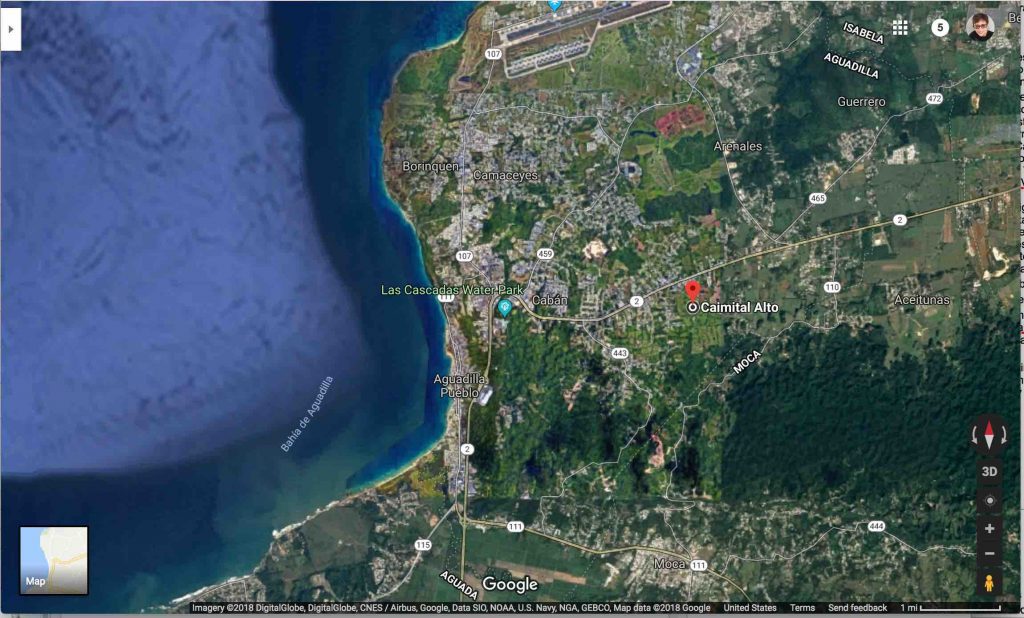
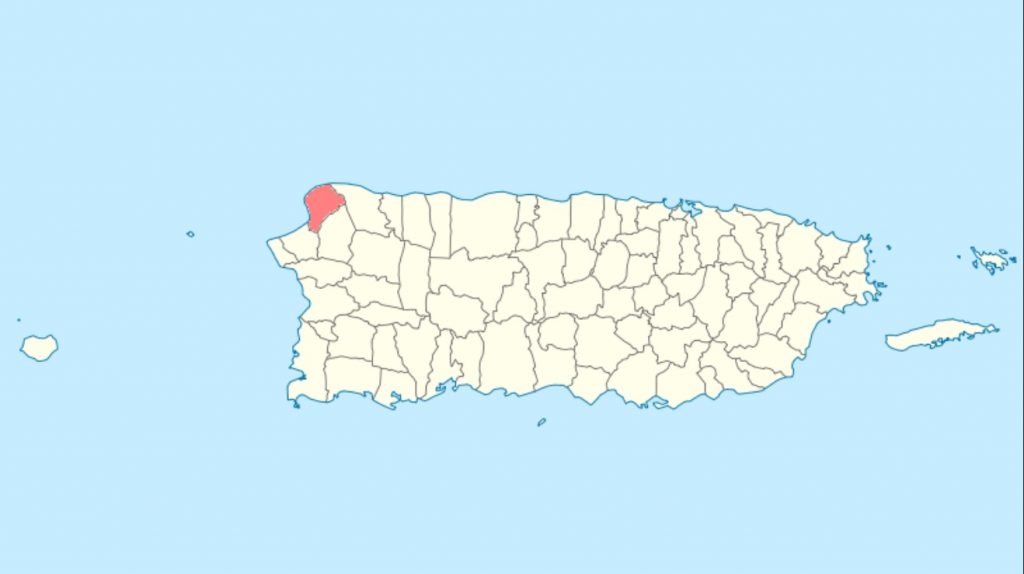
Documents & context
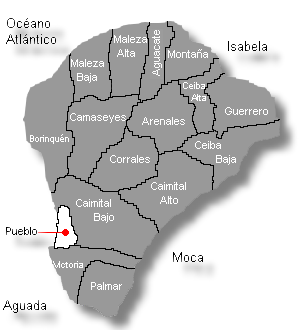
In May 1854, Da. María de Pilar y Da. María Dolores Hernandez Portalatin went before the notary with D. Juan Jose Duprey, to whom they decided to sell their inheritance. The two Marias were the daughters of D. Juan Hernandez and Da. Rosa Portalatin Hernandez, who filed a will two years earlier. Duprey, like the Hernandez Portalatin sisters, also lived in Caimital Alto, Aguadilla, as did the sixteen people they held in bondage. Eventually these properties were tied to the history of sugar that goes back to the 16th century and the start of the African slave trade that brought some 15 million Africans to the New World, while only 2 million Europeans emigrated.
Gleaning details & a little history of Aguadilla
The names mentioned in the wills show three distinct networks of relationships tied by blood, or property, with large tracts of land subdivided among siblings and families, or sold, with the final transaction recorded by a notary.
The documents may contain a description of structures with useful details, such as the names of the other families that bordered their property, and often one finds siblings, cousins, among them. Given the focus on the economic history of the movers and shakers of hacendado society, here is something different, a microhistory that sheds light on the labor of POC that made it all possible, over the course of a year, 1854.
Aguadilla was founded in 1775, the last municipality established out of the former Partido de la Aguada, under the Capitan poblador Juan Bernardo de Sosa, who happens to be my 6th GGF. At that time, the town consisted of 58 homes and bohios with 195 families. By 1812, the municipality was at 6,196 people, 1,273 lived in the pueblo, 4,523 across the rural area, with 647 enslaved persons providing the labor for sugar, coffee and other agricultural produce in addition to an entire range of projects and duties.
Urban development in Aguadilla was a slow process— until 1817 a bohio (hut) was used for the official government buildings of the Casa del Rey and a jail, when a new stucco building was constructed. Until 1823, one road, the Camino Real connected Aguadilla to Isabela and Aguada, and some plantation owners did not want the trouble of a road nearby their complexes. As the population of the city grew, during the 1820s, several fires struck the urban sector, destroyed dozens of homes, which led to the construction of new streets near the plaza. By 1837, three rural barrios were established and Caimital was one of them, divided by the Sierra Jaicoa into Caimital Alto and Caimital Bajo. Over the next two decades the urban areas continued to grow and markets expanded. Ultimately, these situations provided advantages for those in the municipality.
Back to the Sale Document: Property, Land & Human
According to folios 226-228 of the sale by Maria Pilar and Maria Dolores Hernandez Portalatin, living adjacent to the south side of the property in Caimital was their sister Anistacia Hernandez Portalain, on the east, Carlos de la Rosa, and to the west, Maria Lopez, widow of Luis Cubero, an emigre from the Canary Islands. The house in town was on a 22 x 40 vara (61 x 111 ft) lot, next to D. Juan Chico in one side, and on the other D Lino Acevedo, conveniently located near the town plaza.
D. Lino Acevedo is Martin Lino Acevedo y Lopez de Segura (1817-1891) my 1C4R, while his wife Maria Domitila Talavera Hernandez is my 3G Aunt; they married in 1852 and had at least 4 children. One daughter, Domitila Acevedo Talavera 1C3R (1863) married the surgeon Dr. Julian Benejam Dominguez of Moca. The Benejam family were also slave owners.
Lino’s grandfather (and my 4th GGF) is Capt. Martin Lorenzo de Acevedo y Hernandez del Rio (1749-1828), whose string of titles demonstrated the rise of the Lorenzo de Acevedo among the colonial ruling class of NW PR- Alferez Real of Aguada, Teniente de Guerra and Alcalde for Moca between 1792 and 1810, despite his advanced age. Lino’s father, Juan Martin Lorenzo de Acevedo y Gonzalez, and his second wife, Marta Rosa Maria Lopez de Segura y Vives (my GGGG Uncle and Aunt) served as Alcalde (Mayor) of Aguadilla and approved the plans for building streets near the plaza in the 1820s.
All of them were involved in some level of slave owning, and it remains to be seen which ancestors were involved in some kind of Abolitionist project. I can understand that between these tight bounds of blood, land, and power, they would not be partial to the project of freedom. I can say that many seem to have disposed of their small holdings in the latter half of the 19th century to the progressively large companies that formed to deal with wringing profit out of sugar, coffee and people.
Fifteen Ancestors, some born in Africa
In preparation for the impending sale, there was the stress of the examination violating personal boundaries for an event that potentially threatened to divide families. In this case, everyone and everything was sold to d. Juan Jose Duprey Navarro.
9 males, 6 females – 15 total – (values that follows are estimates from Measuring Worth website.)
Nicolás (1826) born in Africa 28 valued at 400 pesos, €1,840.00
Valentín (1841) 13 valued at 200 pesos, €919.00
Policarpo (1850) 4 valued at 150 pesos, €689.00
Juan (1820 ) 34 born in Africa, valued at 400 pesos, €1,840.00
Encarnación (1832) 22 valued at 300 pesos, €1,380.00
Carolina (1853) 2 valued at 160 pesos, €735.00
Clotilde (1838) 16 valued at 320 pesos, €1,470.00
Dominga (1840) 14 valued at 290 pesos, €1,330.00
Ramona (1832) 22 valued at 350 pesos, €1,610.00
Celestina (1852) 2 valued at 100 pesos , €459.00
Enrique (1827) 27, born in Africa, valued at 300 pesos, €1,380.00
Joaquín (1842 ) 12 valued at 260 pesos, €1,190.00
Rosa, (1832 ) 22, born in Africa, valued at 350 pesos, €1,610.00
Victoriano 3 (1851) valued at 100 pesos, €459.00
Eugenio 13 (1841) valued at 350 pesos, €1,610.00
The total value of these 15 souls in Euros is €18,521 which equals $22,892 in today’s dollar.
Those assigned the highest values were Nicolas and Juan, both born in Africa, while the women’s values ranged according to age, apparently priced in anticipation of the potential of the child bearing capacity of Carolina, while the 16 year old Clotilde was assigned the next highest value after Ramona and Rosa, both age 22.
I squirm considering these young teenage girls sold among these documents, wondering what led to the sale and whether they were being sold from one adult male to another in a form of trafficking with multiple consequences that could range from violence, death to rape. This coercive dimension was constantly present and surviving these experiences continued regardless.
An Unexpected Reversal
Oddly enough, on July 1854, Juan Jose Duprey Navarro sold back the entire farm along with the enslaved people listed before, to D. Juan Hernandez and his daughter, Maria del Pilar Hernandez Portalatin for the same amount– 10,071 pesos, which was their inheritance from their mother Rosa. Was this planned, a means of delaying arrangement because of funds or, was the sale simply imperiled by the death of one party?
For this second transaction, the enslaved ancestors are listed as a group:
“los esclavos Nicolas de 28 años, Policarpo de 4 años, Valentin de 13 años, Juan [,] Encarnación, Clotilde, Lorenza, Dominga, Ramona, Celestina, Enrique, Celestino, Joaquín, Rosa, Victoriana y Eugenia”
Note the slight differences- the mention of Celestino is new, while Victoriano and Eugenio have apparently become Victoriana and Eugenia.
Maria Dolores Hernandez Portalatin (1818 -1854)
After arranging the sale earlier that May, Maria Dolores Hernandez, age 36, made a will on 25 May 1854. Three days later, she was buried in Aguadilla. Sudden illness interrupted everything; she was married to D. Angel Gaya just eight months earlier. Gaya made a desirable partner, as he worked as part of Aguadilla’s administration, and so, would bring an income into the union. Although there were no children from the marriage, property was an issue. The solution to maintaining control over Dolores’ property was to have it revert to her father, D. Juan Hernandez; should he die, it would then go to her husband, D. Angel Gaya.
Mentioned in the will is her sister Timotea Hernandez, who preceded her in death, and willed Dolores a third of her goods; her sister Pilar, and her nephew Tomas Talavera Hernandez (b.1817), son of her dead sister Teresa Hernandez Portalatin, my third GGM. Another sister, Anastasia Hernandez was widowed, and that year also gave Angel Gaya permission to put her name forward in any business dealing with the affairs of her mother, Rosa Portalatin Hernandez. This is also the line of my grandfather’s grandmother, that goes back along a line of slaveowning people that by the 1860s, married with the Babilonias of Moca, if not earlier.
In 1854, Dolores Hernandez Portalatin held five people in bondage: Encarnacion and her four children, Dominga, Clotilde, Jose Elias and Carolina. All worked as enslaved servants in her home in Barrio Caimital, Aguadilla and as property, would revert to her father according to her will. Some of the persons have an age listed in the sale document to Duprey, so I have used that to create family groups.
June 1854, Another Sale – Angel Gaya & the sale of Dominga, 15
On 14 June 1854, Angel Gaya sought to settle his wife’s debts according to her will by selling the 15 year old Dominga, a servant for 300 pesos to D. Jose Eugenio Milan. Just eight days later, Milan sold Dominga to Da. Natividad Acevedo, wife of Jose Fulgencio Milan. Natividad Maria Acevedo Lopez was the daughter of Juan Martin Lorenzo de Acevedo y Gonzalez (1781-1844) my 4th G Uncle and his wife, Maria de la Encarnacion Lopez de Segura (ca 1786-bef 1854). Maria Encarnacion may be a sister or first cousin to his second wife, Marta Rosa Maria Lopez de Segura y Vives, whom he married in 1831. Both sides link to sets of my 4th Great Grandparents, which may help me figure out more about the people they bought and sold. I can’t help but wonder what happened to Dominga, born in 1839, sold and traded from one brother and his family to his sister in law and her family.
It’s also important to look at the parents of the Hernandez Portalatin sisters in order to see if there are additional details on these enslaved ancestors, who may appear in additional documents. Both parents, D. Juan Hernandez and Rosa Portalatin held significant properties, plantations that were among the largest in Aguadilla.
D. Juan Jose Duprey: From Guarico, Cap-Haitien to NW Puerto Rico
About 1803, Jean Baptiste Dupre and his wife Luisa Navarré e Doudins, French nationals from Guarico in Haiti, arrived in Puerto Rico, where their names were translated to Juan Bautista Duprey and Luisa Navarro. The couple bought wealth in the form of enslaved ancestors and currency that they used to buy land in Aguadilla, Aguada and Arecibo. They had twelve children, and after Duprey’s death in 1822, his wife divided the slaves and part of the land between a society (small group of investors) and Juan B. Doumerg. She eventually remarried, to a French-born plantation owner German L’Aufant Nalo in Aguadilla in 1826. It remains unclear as to what was the Duprey’s situation, and whether they were or were related to largest and wealthiest free population of color in the Caribbean, as were some families from Hispaniola who arrived and settled in Aceituna for example.
There are extracts of parish registers from Haiti that may show Jean Baptiste Dupre as baptised on 13 February 1787, a date which still fits his timeline:
Dupré Jean Baptiste, figure sur le registre des baptêmes de Haïti (ex colonie française de Saint- Domingue), la date de son baptême figurant sur le registre était le 13 février 1787. There are a set of documents in the FamilySearch collection, Record of Foreign Residents in Puerto Rico, that includes the 1808 file on Duprey, which enabled the government to affirm his Spanish citizenship on Puerto Rico.
Juan Jose Duprey Navarro married Martina Cerezo Sosa (1817-1892) my 3C3R, daughter of Maria Manuela Sosa Vives (my 2C4R) and Ramon Cerezo Gallardo. Maria Manuela is the granddaughter of the Irish emigres on her maternal side, who arrived early to PR. Here too is involvement in slave owning that extends to more families. Josefa Maria Suarez Estopinan, with the help of her husband d. Epifanio Sosa, by matrimonial license notes “she gives royal sale to da. Martina Cerezo, wife of d. Juan Jose Duprey, for a servant slave named Rosa age 14, which she inherited from her mother, Maria Estopinan”, according to a document dated Juan 1841, for the price of 280 pesos. Thanks to her rights as a wife, Josefa was able to sell the 14 year old Rosa for a significant price, five years before her marriage.
Juan Jose’s brother, Luis Duprey Navarro owned Hacienda Casualidad in Barrio Guayabo, Aguada between 1845 and 1852; he also owned a brick factory there according to the Riqueza Industrial of 1852. Luis’ son and Juan Bautista’s grandson, Luis Duprey Gaya, married Ana Roque Geigel de Duprey in 1853. A recent pamphlet on her scientific work that culminated in a major botanical collection offers a brief overview of her life and included a significant incident without mentioning her husband.
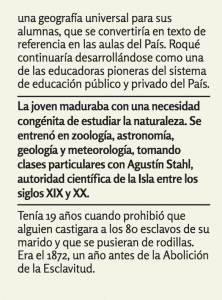
The last paragraph states: “She was 19 years of age when she stopped someone from punishing her husband’s 80 slaves by making them kneel. It was 1872, one year before the Abolition of Slavery.”
However there is no other context given that connects slavery, the economic basis of her family’s business, to the larger context of education, and her position as a woman within a society that did not consider them academic equals, is explained solely in terms of developing public education. The juxtaposition is jarring as the fields of the sciences clash with the reality of the sugar and coffee cultivation in the Sierra Jaicoa of NW PR.
As with other plantation based families in NW PR, the Duprey Navarro family’s investment in sugar and coffee continued well into the 19th century.
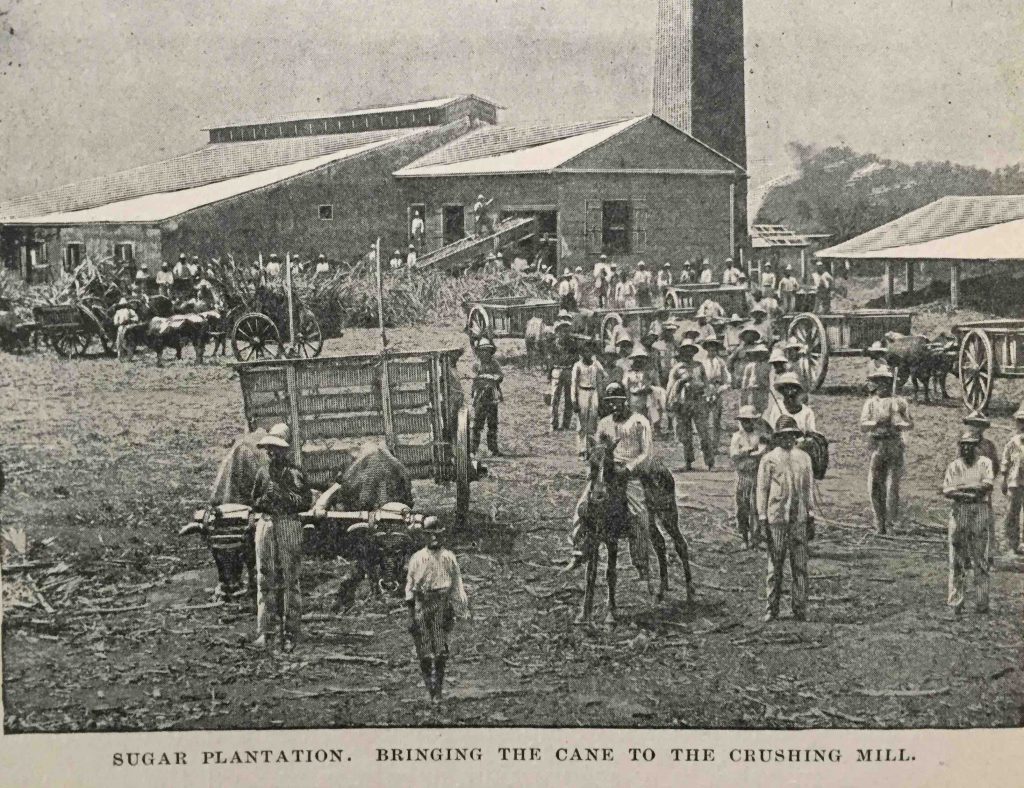
The Struggle for Freedom in Saint Domingue
The arrival of the Dupreys is eventful when considered against the previous seven years. By 1795, a significant sale of enslaved persons occurred in Aguadilla, which included several imprisoned for their alleged role in the 1789-1791 uprising in Saint Domingue. However, the official plan of selling these prisoners from the French half of the island, across the sound in Puerto Rico to sell them here, simply brought the knowledge and experience of insurrection closer to home.
Precisely when the Dupreys show up in Puerto Rico isn’t specified, yet they were careful to note their arrival from Guarico, the original Indigenous name for the area, rather than Cap-Francaise, or after 1804, Cap-Haitien. Cap-Francaise was the capital of Saint Domingue until 1770, when Port-au-Prince became the capital until 1804. His papers simply state that he’s not in great health, and lives in the country with his family, no mention of his wealth in land and people. These kinds of reassurances serve to detach the explosive events of the last decade.
Yet the scale of slavery in Saint Domingue simply staggers: “The labor for these plantations was provided by an estimated 790,000 African slaves, accounting in 1783–1791 for a third of the entire Atlantic slave trade. Between 1764 and 1771, the average annual importation of slaves varied between 10,000 and 15,000; by 1786 it was about 28,000, and from 1787 onward, the colony received more than 40,000 slaves a year. However, the inability to maintain slave numbers without constant resupply from Africa meant the slave population in 1789 totalled to 500,000, ruled over by a white population that numbered only 32,000.” [Saint-Domingue, Wikipedia] At the cusp of the 19th century, this situation and the violence required to maintain it, is at the core of white fears in the Caribbean .
In October 1795, there was a slave uprising in Aguadilla, and historians suspect those sold here brought knowledge that inspired those enslaved here to resist. However, despite requests for the files in Spanish and Puerto Rican archives, official reports on the uprising are missing, which speaks to the strength of the desire to show that the island was under control by the government.
Another aspect as I have discussed before, were the close familial ties involved that could cast family members in a negative light. This is yet another reason for a report to conveniently be misplaced or lost, however at the same time, attempts to control the enslaved population continued by passing further restrictions in revamped versions of the Black Codes and instituting rules that reflected heightened fears, known as the ‘Haitian Syndrome’.
Ultimately for Puerto Rico, the uprising and the destruction of plantations in Saint Domingue, and the arrival of the Europeans, creoles, African and African descended peoples to the island was an incredible opportunity. The major provider of sugar and coffee lost its place in the world market, and Spain sought to raise its claim on the market. What hid behind the product was a hell on earth, morphing as the sources of sugar began to diversify.
Another factor to consider when tracing ancestors is an ongoing illegal traffic in slaves that escape count at times because purchasers of slaves had to pay a 25 peso fee to have the enslaved entered into official records. Will further knowledge of these lives eventually come to light?
This illegal traffic in turn, skews the numeric charts that list the number of blancos, pardos libres, negro esclavos & negros libres [whites, free people of color, black slaves and free blacks] at any given time on the island. This seems to come up when comparing the tallies for municipalities versus national totals, which tells us there’s more to know about this illegal trade in people.
Also, realize that the sale of enslaved persons in the Caribbean and North America and Europe has a long standing history, so that by the 1780s an enslaved man from the American south marries his partner in the parish church of Aguadilla. Did this marriage begin as a story of distant sale as a result of resistance? Could such narratives be traced back to these parish pages? The uprisings that led to the foundation of Haiti in 1804 struck fear into slaveholders yet they continued to refine their means of holding people in bondage, even as change began to flag an end to aspects of this economic system. Although the story of insurrection is constantly relegated to silence, the details seep out, and my hope is that these histories can be restored.
After Emancipation: the challenge of tracing families into freedom
Some of the persons who match the list in terms of name and age continued to live out their lives in Aguadilla after 1873. As the volume for the Third District of 1872 Registro de Esclavos is missing, I have not yet cross-referenced them with this record set, and plan to. Instead of bearing the name of the first slave holder, I find that some match Duprey, or different surnames. The Duprey family had extensive holdings in Aguada, Arecibo and other properties in Aguadilla and Moca. Clearly, I will need these additional records to find the others listed.
In order to locate them, I used a very simple search, using the name and the date to see what might come up both in Ancestry and FamilySearch.org. Next, I checked additional details regarding potential locations, mentions of names and then cross reference those finds out, to build some branches.
Clotilde, Age 16
Among the 15 people was Clotilde. “Clotilde, 16 valued at 320 pesos”, I believe is the same woman as Clothilde Medrano/Lopez/Rosa b. 1838 in the Registro Civil.
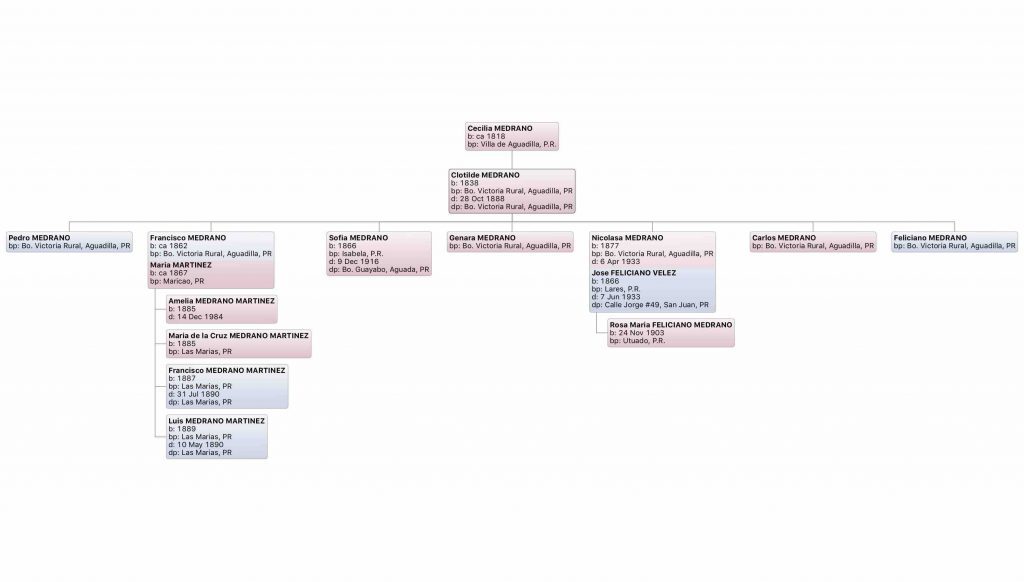
She was the daughter of Cecilia Medrano (bca 1818), and continued a single female household of six children, named in her Acta: Pedro, Francisco, Sofia, Genara, Nicolasa and Carlos. During the course of her 50 years, she saw many changes, and raised seven children, some of whom are in the Registro Civil. She died in Barrio Victoria, an urban section of the pueblo of Aguadilla.
Her nephew, Mariano Abril reported her death. He worked as an agricultural day laborer who lived in Barrio Victoria, the same ward where Clotilde lived and died. This was not far from Barrio Pueblo of Moca. The informant for Clotilde is Mariano Abril Sanjurjo, (1853-1912). The relationship may be via his wife, Emilia Alonso Rosa (1862-1907). Mariano and Emilia’s son, Mariano Abril Alonso (1882-1960) was at one point, the partner of my grandfather’s sister, Eduviges Monserrate Babilonia Lopez (1895-1979) of Moca. It seems that neither Emilia nor her parents were married, adding more complexity to a search along that line for the family connection between Mariano and Clotilde. Regardless, the connections now span over a century.
A daughter of Clotilde’s, Nicolasa Medrano, moved to Utuado and married Jose Roberto Feliciano Velez (1866-1933) of Lares, a member of the Policia Insular. On the certificates for Nicolasa’s death in Santurce and marriage in Lares are several details that matter: both she and her mother appear as Nicolasa Lopez and Clotilde Lopez of Aguadilla, and Francisco Lopez is named as her father, and her mother appears under yet another surname, as Clotilde Rosa in her marriage certificate of 1897. The rest of the details concerning her husband are consistent. It is entirely possible that her father’s name was finally revealed to her late in life; he may be from Aguada or Aguadilla, and could be ‘blanco’ or light skinned, as she is identified as ‘mulata’.
A son, Francisco Medrano (bca 1862), married Maria Martinez of Maricao and had at least four children born between 1885-1889— Amelia, Maria de la Cruz, Francisco and Luis Medrano Martinez in Las Marias.
Another daughter, Sophia Medrano (1866-1916) lived in Barrio Guayabo, Aguada and died there of pneumonia in 1916.
I hope to learn more about these ancestors, and hope to post more in future.
If you’re related to someone mentioned in this post, Mabrika (Welcome)— please feel free to leave a comment and connect!
References
Angel Nieves Acevedo, Historia de Aguada Editorial Aymaco: lulu.com, 2012.
Angel Nieves Acevedo, Historia de Aguadilla, 1775-1899. Editorial Aymaco: lulu.com, 2012.
Antonio Nieves Mendez, Historia de un pueblo: Moca 1772-al 2000. Editorial Aymaco: lulu.com 2008.
Carlos Encarnacion Navarro, transcription. Instituto de Cultura Puertorriquena, Archivo General de PR, Fondo de Protocolos Notariales, Caja 1289, Serie- Aguadilla, Pueblo- Aguadilla, Escribano Lcdo. Manuel Garcia Ano 1854. Folios fol.226-v (a) 228, fol.310-v a 312
Carlos Encarnacion Navarro, transcription. Instituto de Cultura Puertorriquena, Archivo General de PR, Fondo de Protocolos Notariales, Caja 1434, Escribanos- Otro Funcionarios, 1852-1878, Cedula Testamentaria, Da. Dolores Hernandez, 25 May 1854.
Leandro Prados de la Escosura,”Five Ways to Compute the Relative Value of a Spanish Peseta Amount, 1850 – 2000,” MeasuringWorth, 2018. URL http://www.measuringworth.com/spaincompare/
Raquel Rosario Rivera, La presencia haitiana en Puerto Rico 1791-1850. 2015
Raquel Rosario Rivera, La presencia dominicana en Puerto Rico 1791-1850. 2015.
“Para la misma fecha (1803) se domicilia en Aguadilla Juan Bautista Dupre (Duprey), natural de Francia. Esta familia procedente del Guarico Francés, Haití, trajo fortuna en metálico y esclavos, adquirieron terrenos en Aguadilla, Arecibo y Aguada. El matrimonio de don Juan Bautista y doña Luisa Navarré y Doudins, natural de Haití tuvo doce hijos. Al morir el Señor Duprey en 1822 en Aguadilla, la viuda dividió los esclavos y parte de los terrenos que tenía en sociedad con el señor Juan B. Doumerg. Doña Luisa Navarré casó en segundas nupcias en Aguadilla el 12 de octubre de 1826, con el hacendado don Germán L’Aufant y Naló 7, natural de Niche, Francia. De este enlace sólo tuvo un hijo Adrián, quien nació en Aguadilla en 1827, y murió en Bremen, Alemania, en 1845.“
Haydee Reichard de Cancio, “Los Dominicanos en Aguadilla.” PReb.com Accessed Feb 8, 2018.
“Juan Bautista Duprey.” Record of Foreign Residents in Puerto Rico. FamilySearch.org https://www.familysearch.org/search/collection/1919700 Accessed 10 Feb 2018.
Données diverses Saint-Domingue, Guyane Généalogie. http://www.guyanologie.fr/Haiti.php?recherche=DUPRE&ty Accessed 10 Feb 2018.
Elvian Martinez Mercado, “Una scientifica rebelde: Los cuadernos recuperados de al Botanica antillana, Ana Roque de Duprey.” Para la Naturaleza. Centro de Periodismo Investigativo.
Note there is no father, Casto Medrano, this is a mangling of Cecilia Medrano, Clotilde’s mother in the transcription. “Puerto Rico, Registro Civil, 1805-2001,” database with images, FamilySearch (https://familysearch.org/ark:/61903/1:1:QVJ8-5F2G : 17 July 2017), Clotilde Medrano, 29 Oct 1888; citing Aguadilla, Puerto Rico, oficinas del ciudad, Puerto Rico (city offices, Puerto Rico).
“Puerto Rico, Registro Civil, 1805-2001,” database with images, FamilySearch (https://familysearch.org/ark:/61903/1:1:QVJX-XY98 : 16 July 2017), Clotilde Medrano in entry for Sofia Medrano, 19 Dec 1916; citing Aguada, Puerto Rico, oficinas del ciudad, Puerto Rico (city offices, Puerto Rico).
“Puerto Rico, Registro Civil, 1805-2001,” database with images, FamilySearch (https://familysearch.org/ark:/61903/1:1:QVJ4-1RVJ : 17 July 2017), José Roberto Feliciano and Nicolasa López, 29 May 1897; citing Lares, Puerto Rico, oficinas del ciudad, Puerto Rico (city offices, Puerto Rico).
“Puerto Rico, Registro Civil, 1805-2001,” database with images, FamilySearch (https://familysearch.org/ark:/61903/1:1:QVJX-WVMZ : 17 July 2017), Nicolasa Medrano in entry for Rosa Maria Feliciano Medrano, 24 Nov 1903; citing Utuado, Puerto Rico, oficinas del ciudad, Puerto Rico (city offices, Puerto Rico).
Note the mangling of ‘Feliciano’ in the transcription. “Puerto Rico, Registro Civil, 1805-2001,” database with images, FamilySearch (https://familysearch.org/ark:/61903/1:1:QVJS-9BKH : 17 July 2017), Nicolasa Lopez de Petroconio, 06 Apr 1933; citing Santurce (San Juan), Puerto Rico, oficinas del ciudad, Puerto Rico (city offices, Puerto Rico).

